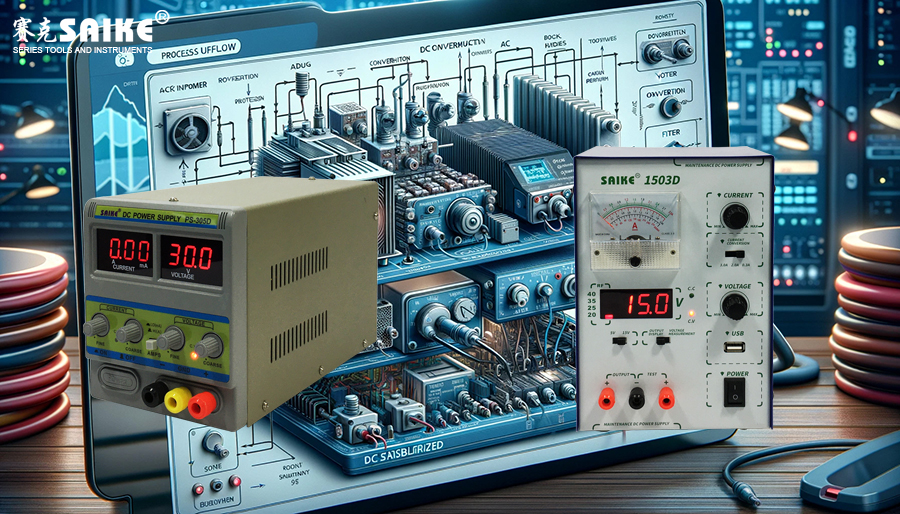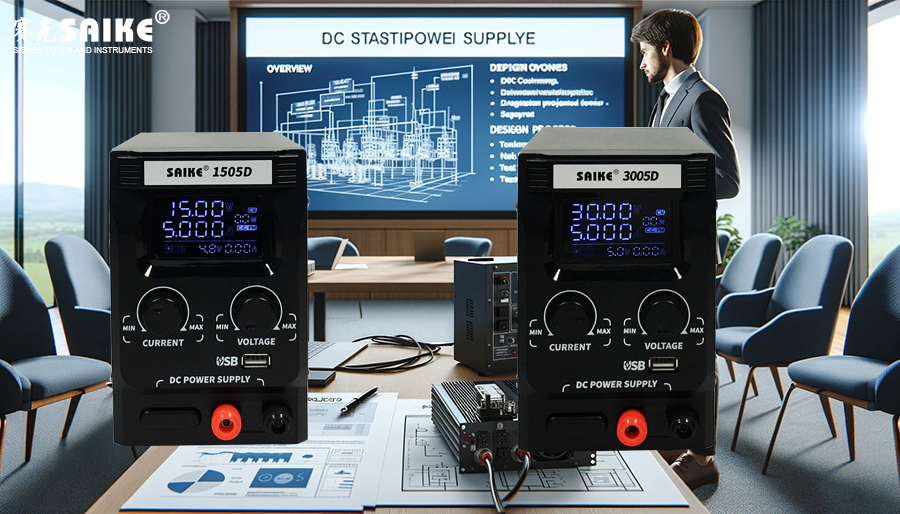
SK-YJ000ZLWYDY-KP 100009
The DC stabilized power supply is an indispensable part of an electronic system, ensuring that equipment can operate under a stable voltage supply. To deeply understand how DC stabilized power supplies operate, this article will detail its overall workflow, including the main functional modules and how they collaborate to produce a stable DC output.
I. Main Functional Modules of DC Stabilized Power Supply
1.Transformer
– The transformer adjusts the input voltage to a level suitable for power processing, usually lowering or raising the voltage.
2.Rectifier
– The rectifier converts the alternating current (AC) output from the transformer into direct current (DC), typically using half-wave or full-wave rectification methods.
3.Filter
– The filter reduces the ripple in the rectified DC, providing a smoother voltage output. Key components include capacitors and inductors.
4.Voltage Regulator
– The voltage regulator ensures that the output voltage remains constant, unaffected by input voltage fluctuations or load changes. It can be of a linear or switching type.
II. Workflow of DC Stabilized Power Supply
1.Voltage Adjustment
– When the power supply starts working, it first adjusts the AC input voltage through the transformer. This step is necessary because grid voltages can vary across different applications and regions.
2.Voltage Conversion
– The transformed AC voltage is sent to the rectifier, which converts it into DC voltage. This conversion involves converting the negative half-cycles of AC to positive or directly using the positive half-cycles.
3.Filtering Process
– The rectified DC still contains a lot of ripples. The filter smooths the output by using capacitors to store peak voltages and release electrical energy when the voltage drops. Inductors further reduce ripple by impedance to rapid changes in current.
4.Voltage Regulation
– Although the filtered DC voltage is relatively stable, it can still be affected by input variations or load fluctuations. The voltage regulator monitors the output voltage and precisely controls it by adjusting the conductance of internal components (such as transistors) to ensure its stability.
III. Protection Mechanisms
1.Overvoltage Protection
– If the output voltage exceeds the safety threshold, overvoltage protection will disconnect the power supply or limit the output to protect connected equipment.
2.Overcurrent Protection
– Overcurrent protection prevents the output current from exceeding the maximum capacity of the power supply, usually by disconnecting the output or lowering the output voltage.
3.Short-circuit Protection
– In case of a short circuit at the output, short-circuit protection will immediately disconnect the power supply to prevent more severe equipment damage and safety accidents.
IV. Summary
The DC stabilized power supply provides a stable and safe DC output through a series of precise electrical processing steps, including transformation, rectification, filtering, and voltage regulation. Each step is crucial to ensuring the stability and quality of the final output voltage. Understanding the working principles and interactions of these steps helps make more appropriate technical choices when designing and maintaining DC power systems.


